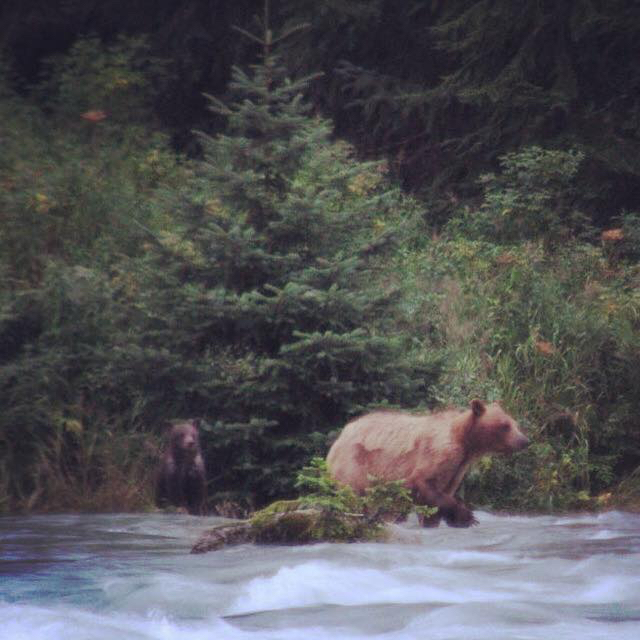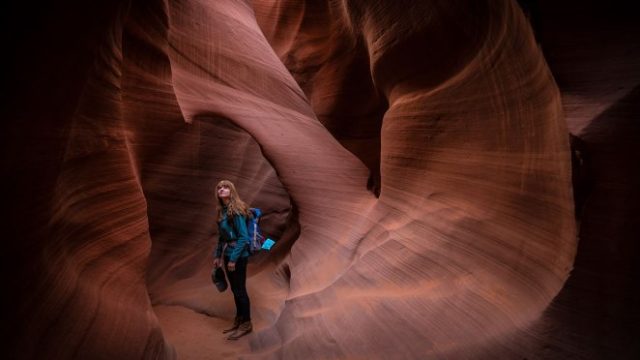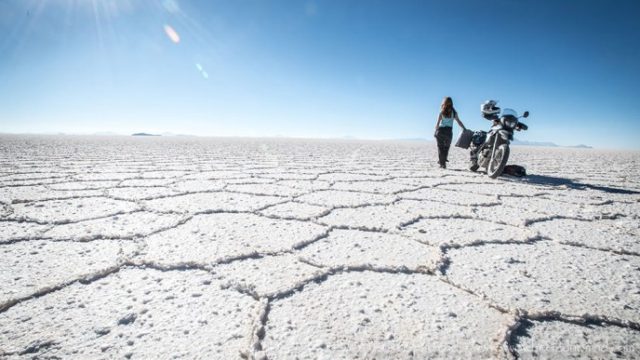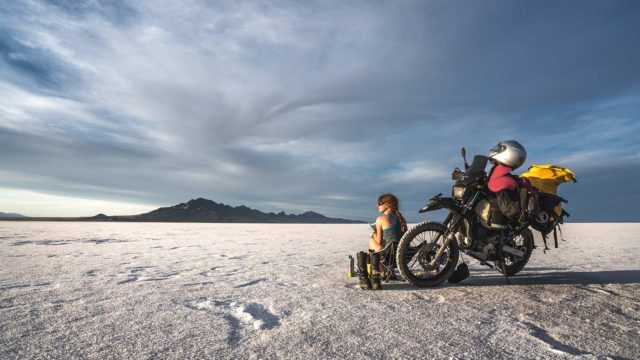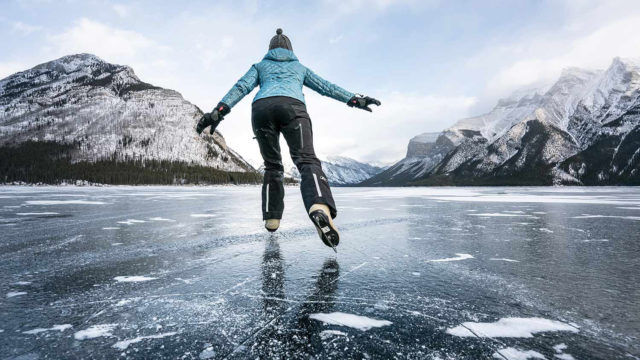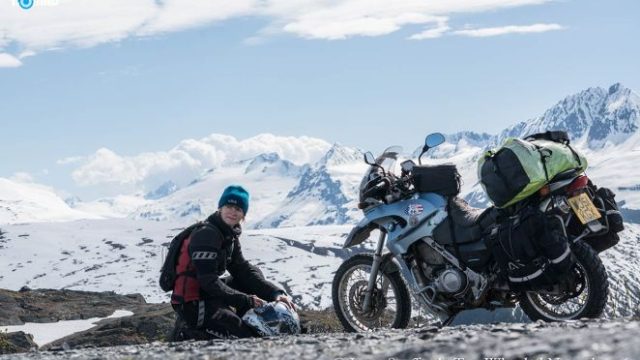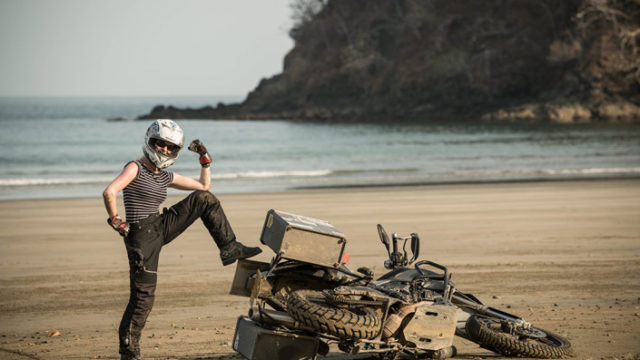Regrouping with the Fishhook Fatties in Wasilla from coming down the Dalton, we jumped at joining them in celebrating Jade Laughlin’s birthday. Over a succulent hog roast (formerly known as Leona, hand reared by one of the younger Fishhook Fatties), and locally brewed beer: a refreshing Rhubarb Hefeweizen and Salted Caramel Red blend, which had been commissioned by the Fatties no less.
But not before taking a cheeky two-day jaunt over to Homer with Kristina and Josh. One mojito led to another, which at some point gave way to a table of empty beer bottles and before you knew it, the four of us had morphed into one mass of wild, unruly hysterics in a way that only the Salty Dawg Saloon establishment gloriously accommodates.
The morning after the night before: “Not so loud,” I whispered. I was the opposite of deaf; every noise was fingernails against a blackboard, scorching my eardrums from the inside. The ocean was too loud, please turn it down. My hangover registered every beat of every breath, and what I heard in Jason’s inhalation was annoyance. I opened my eyes a crack and saw him unzip the tent door and perhaps even a spike in his annoyance. I eventually brushed my teeth and changed out of clothing from the night that-kept-on-giving before but still felt my brain encased in porcupine quills.
Both my mum’s imminent 60th birthday in the UK and the risk of outstaying our visa welcome meant we needed to promptly vacate the States by 4th July, of all days. Jog on, Brits—time to leave! Making our fond “See you laters” to those in Alaska, we tootled back over the border and rode to Whitehorse, Canada. While I indulged in a week of gourmet tucker, flutes of champagne and a little glamour on English soil—honestly, it felt strange to be so clean, but good strange—Jason was free to get his yah yahs out on the Dempster Highway with Ian and Josh. Both of us revelling in our new happy places, it was time apart exceedingly well spent.

Southeast Alaska is made up of several large islands, countless smaller ones—set like jewels in an elaborate necklace against a thin strip of rugged mainland bordering Canada. This is where you’ll find the “Inside Passage” served by the Alaska Marine Highway (AMH): a wallet munching but convenient intercity transportation route that stretches over a 3,500 mile coastline. It stops at 33 ports of call and whether you’re travelling by camper, car, moto, push bike, kayak or foot, it’s one heck of a tranquil way to see Alaska and an abundance of wildlife, if you’re not on the fast ferry that is. And perhaps best of all, to experience pristine places that are inaccessible by road.

Located in a setting that by all accounts testified to unequalled in scenic splendour, was enough to call ours eyes to dance with it. Flowing from the southernmost point of embarkation in Bellingham, Washington up to north to Skagway, across the Gulf of Alaska, into Prince William Sound, and out to Dutch Harbour, the tip of the Aleutians.
Although our lush, green and wet voyage on the inside began at the north end of the Lynn Canal in Skagway. Not a bad starting point: the town’s surrounded by the usual suspects of glaciers and towering peaks, high alpine tundra, rivers and lakes but believe it not, coastal rainforest as well. It’s actually the largest temperate forest in North America (the Tongass National Forest), covering a biomass of nearly 17 million acres. Blimey.
In its heyday, Skagway revealed itself as a spirited and rather sordid boomtown overrun with throngs of fortune-seeking prospectors trying to stake their claim to the Klondike—if not relieving others of their own—during the Gold Rush of 1898. Canadian Mountie Sam Steele described the place as “a little better than hell on earth!” Historic buildings from the 19th century, now beautifully restored, barroom pianos and traditionally costumed staff echo the rollicking excitement of ’98. Dating back when rich, lonely prospectors faced the temptations of bawdy saloons, the lure of painted ladies and Jefferson “Soapy” Smith leading his ruthless gang hell bent on their reign of terror.

Streets once choked with gold-crazed stampeders all but clambering over one another to strike it rich, are now just as busy with glittery hordes of cruise ship tourists. Listen long enough, and you’ll hear the questions: “Is there anywhere we can buy a t-shirt here?”, “How big is your 7” pizza?” or my personal favourite: “How high are we above sea level?” For us, Skagway made the perfect gateway if not getaway to board the ferry to Haines. Although I heard there was some fine stomping ground to be had at a high alpine lake called Upper Dewey Lake.
Gold-tinted frontier towns aside, the backstory to Haines began in 1879 when a canoe slipped into the mouth of the Chilkat Inlet carrying S. Hall Young. As an Anglo settlement, Haines was established by a Presbyterian mission where it became a frontier outpost. Situated at the upper end of North America’s longest and deepest flowing fjord, Haines is located in a spectacular setting on Chilkat Peninsula, tucked away in the spruce forests. Where it lies no more than 14 nautical miles from Skagway, it’ll cost you 350 miles by road.

Boasting one the highest concentration of bald eagles in North America—Alaska boasts more than anywhere else in the US—Haines gave us an Alfred Hitchcock’s glimpse of the glory of the bald eagles gliding in, trimming their angles this way and that. Honestly, they’re like crows up here. Although late fall sees around 3,000 bald eagles, attracted by the abundance of spawned-out salmon in the Chilkat Valley. The brilliant bird of prey can spot a fish from up to a mile away and thinks nothing of nosediving at 100mph when it actually has one in its sight. Or hacking chunks out of salmon still flipping their tails, if not embedding its talons into one while soaring to a spot it can devour dinner in peace.

At the point of disembarkation, the serene heavens above Haines dumped buckets on us. It rained pitchforks, cats and dogs, and camp lakes and tent moats. A pestilence of rain we received, unleashed in temper but as Billy Connolly once said, “There’s no such thing as bad weather, just the wrong clothing.” Try wellies or waders. While the wet didn’t really abate, it didn’t stop a cinnamon coloured grizzly sow and her chocolate-coated cub meander down to the river in search of supper. Just half an hour after we’d left the same spot in an attempt to locate them elsewhere. Darn it!

There had been another grizzly rummaging through the garbage bin, right outside our hotel in Prudhoe Bay: Lyndon Poskitt can vouch for that, he saw it. Highly elusive the browns remained but determined we were. The sensation rose up inside me that they were near, holding sway. By an attendance in my soul, it consumed me—oh that river of wishes, how it might have carried me down through all the glittering sandbars to the sea. I just wanted to run out into the forest and shout something that would flush them out like a flock of scared ducks. I suppose I could slather myself in honey inside the tent and lie next to some putrid pink salmon.

As the weather showered down, I thought to myself perhaps the bears had all shrunk away like water on a witch. Numerous attempts to sight them along the mile-long Chilkoot River, which connects the lake with saltwater fjords, eventually gleaned a conversation with some local fisherman. “Yeah, she’s here most nights with her cub. Saw her again last night after 9 where she hung around til 10, 10.30.” Oh really, that late.

Back on the bike two-up alongside our friends Kristina and Josh, who’d joined us once again on the road. Light levels dimmed as my mind sparked creatively. By the water’s edge, I imagined the Arctic, its clean snowscape where no pollution lies. I pictured a great white bear trotting on the pack ice under a cold blue sky; she’s been trotting that way for days—air in, air out—her bellows a happy machine, look at her cover the ground. It gave my imagination a pleasing slap, and it arrived with as much fantasy as I could summon. I froze with excitement. Two flashes of cinnamon, jumping into the darkness as quickly as I saw them. Was that the grizzly mum, trotting off onto the trail?

Moving to a better vantage point from across the river, the cub had taken cover close by but the mum wandered out, lifted her head and sniffed the wind as she surveyed her surroundings. The beautiful animal stopped. I barely breathed. The sow shied, approached the water’s edge nervously and stopped again. A cathedral of silence descended on the water. A whisper of wind ruffled the bear’s dishevelled hair as she turned on a dime and disappeared.
